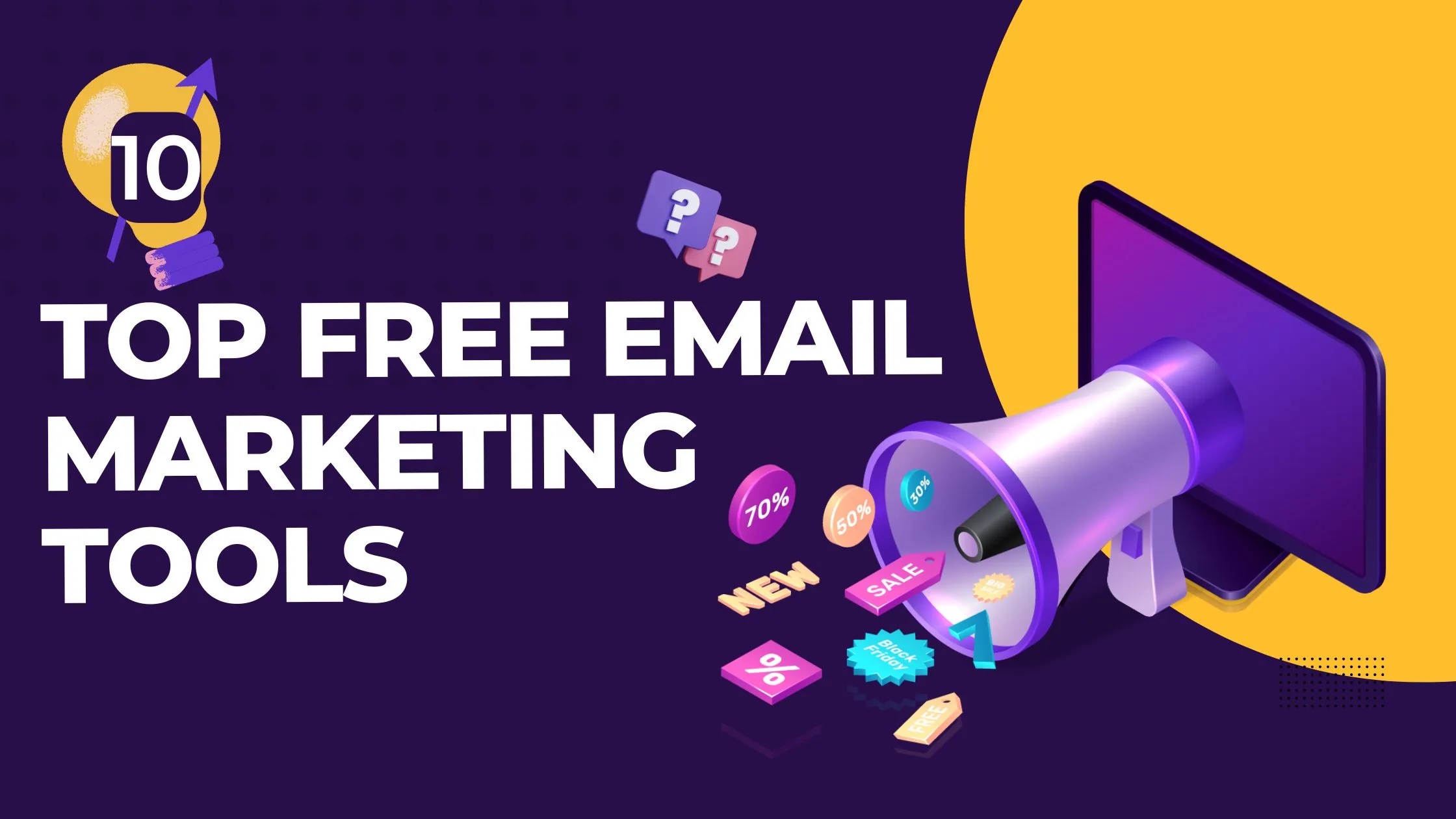You’ve decided to put more energy into growing your business, and maybe you’re still operating from your bedroom—but your customers don’t need to know that.
So far, you’ve been sending emails to your small list of 50–200 subscribers that you’ve slowly built, but Outlook just isn’t cutting it anymore. Some messages end up lost in spam folders, and there was that one time you accidentally CC’d instead of BCC’ing—leading to a few unsubscribes that had to be handled manually.
Surely, there has to be a better way.
It could be the perfect moment to explore a professional email marketing platform and refine your email strategy. And before you assume “professional” means expensive, there are plenty of free email marketing tools that do the job effectively. No more lost emails, spam troubles, or accidental exposure of personal information.
Free Email Marketing Services in Detail
1. MailerLite – Covers Most Needs

True to its name, MailerLite focuses on providing a straightforward, no-nonsense email marketing service. The platform offers a user-friendly newsletter tool along with handy features like landing pages, forms, and marketing automation. Their ‘Free Forever’ plan grants access to most of these features, though not all.
What we liked
MailerLite is very intuitive, making it easy for beginners to launch email campaigns quickly. With fewer than 1,000 subscribers, you can send up to 12,000 emails per month and set up simple automation workflows and landing pages without paying a dime.
Where they could improve
The free plan doesn’t include access to templates, so you’ll need to design your emails from scratch. If templates are a must, Brevo (also on this list) offers a comparable set of features. Free users also miss out on spam and design testing, and the automation options, while workflow-based, are somewhat limited to basic tasks like trigger emails and updating contact fields.
Another concern is MailerLite’s strict approval process: you must verify your website or explain why you don’t have one. Some users have reported being unexpectedly locked out of their accounts, with reinstatement proving tricky.
Who the free plan is ideal for
MailerLite is one of the strongest free email marketing options available. It’s particularly useful for small businesses on a budget that want an easy, all-in-one tool for inbound marketing.
2. Kit – Perfect for Bloggers and Newsletter Creators
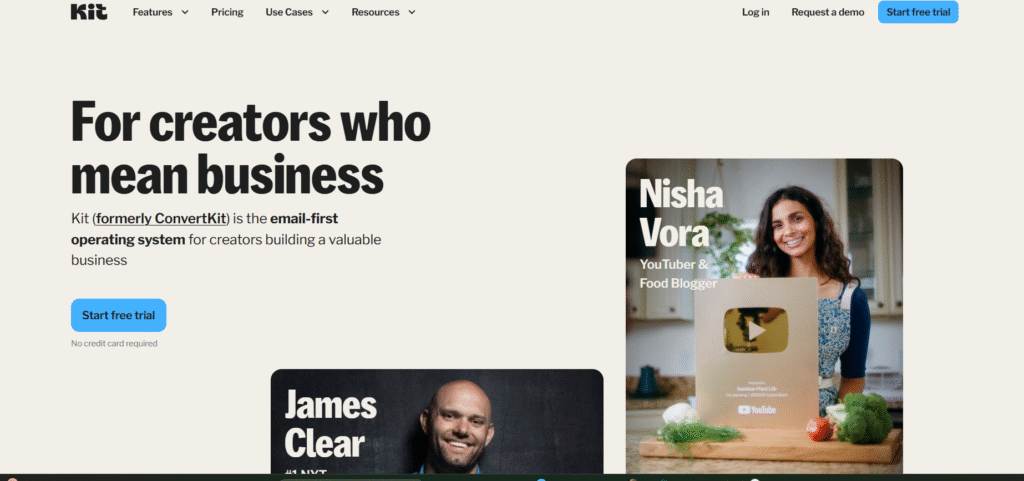
Kit (formerly ConvertKit) is designed for creators and bloggers, offering tools like landing pages, complex email sequences, subscriber segmentation, and the ability to sell digital products or subscriptions directly through the platform.
It ranks high on our list of free email marketing services due to its generous freemium plan, which supports up to 10,000 subscribers and includes unlimited emails, forms, and landing pages.
Paid plans unlock unlimited automations and sequences, plus extras like paid recommendations and third-party integrations. Pricing starts at $15 per month for creators with fewer than 300 subscribers.
What we liked
Kit excels in areas like fast, helpful customer support. Its tagging system allows flexible subscriber management, helping you target your audience more effectively. The landing page editor also enables you to gather subscribers without a website, making it ideal for social campaigns. The built-in monetization feature for selling digital products or subscriptions is a rare addition and comes even with the free plan.
Where they could improve
The free plan has limits: Kit branding cannot be removed, and other recommended newsletters must be displayed when subscribers sign up. The platform is also primarily text-based, making it less suitable for highly visual, image-heavy emails. While useful, the free plan’s full potential is realized only with paid upgrades, which can become costly as your list grows.
Who the free plan is best for
Kit is ideal for bloggers and creators starting out or managing a small subscriber base. As your audience grows, upgrading to a paid plan may be necessary to access advanced features and make the most of the platform.
3. Beehiiv – A Strong Alternative to Kit
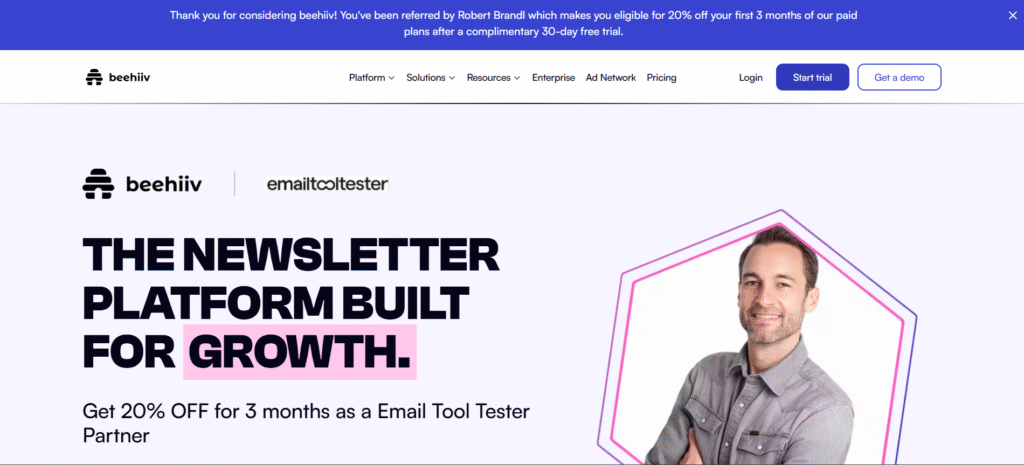
Beehiiv is a comprehensive newsletter platform tailored for content creators, bloggers, and writers. It combines a publishing platform, website builder, and email marketing tools, making it a solid choice for creators looking to monetize their content smoothly.
On our list of top newsletter tools at Web Believers, Beehiiv even rivals popular platforms like Kit and Substack, although its free plan is slightly more limited in comparison.
Beehiiv’s free Launch plan lets you send unlimited emails to up to 2,500 subscribers and includes features like a website builder, tagging and segmentation, and management of up to three newsletters.
What we liked
The free plan allows unlimited emails, a website builder with custom domain support (rare in free plans), and management of multiple newsletters. Its recommendation network is notable, letting creators exchange audience suggestions with other newsletters. The tagging and segmentation tools are intuitive, helping organize subscribers and deliver targeted messages efficiently.
Where they could improve
Some key features are missing in the free plan. Monetization tools like selling subscriptions or sponsorships require a paid upgrade, making it less generous than Kit. Email automations, such as triggered welcome campaigns, are also unavailable on the free plan.
The jump to the $49/month Scale plan may feel steep for smaller creators, especially since there’s no intermediate tier. Additionally, free plan users must display Beehiiv branding in their newsletters, removable only on higher-tier plans like Max or Enterprise.
Who the free plan is best for
Beehiiv’s Launch plan suits creators starting out or managing smaller subscriber lists. As your audience grows or you aim to monetize, upgrading will be necessary to access features like automations and monetization options.
4. Omnisend – A Robust Free Solution for Ecommerce
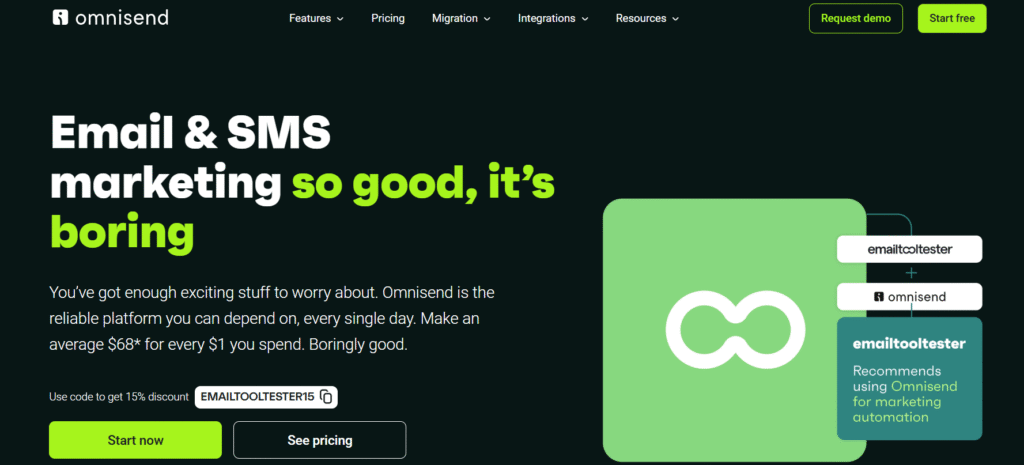
Omnisend is an email marketing service tailored for ecommerce, packed with useful features such as automation workflows, the ability to automatically include your store’s products in newsletters, and engaging email add-ons like scratch cards and gift boxes. The free plan also includes website tracking, 24/7 support, detailed reporting, and landing pages—quite impressive for a free offering.
However, a recent pricing update has significantly reduced email limits. Previously, users could send 15,000 emails per month (2,000 per day), but now the free plan only allows 500 emails and a maximum of 250 subscribers. While this could suit users with a small subscriber base seeking advanced features, most will quickly exceed these limits.
5. GetResponse – Includes a Website Builder
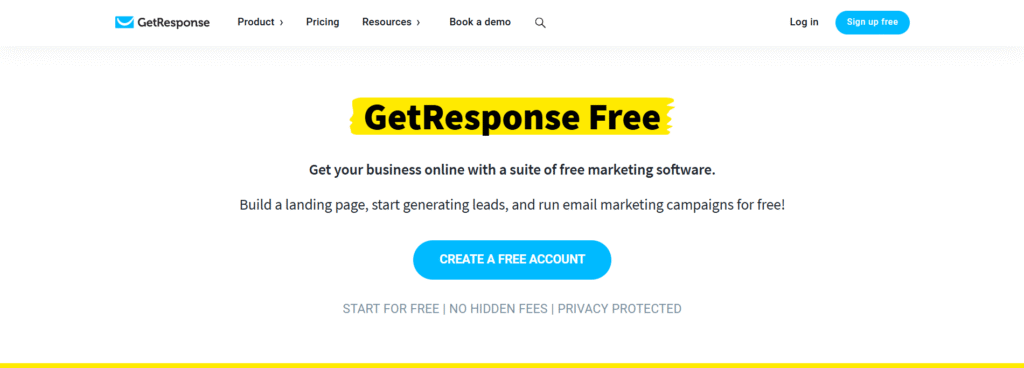
GetResponse has recently introduced a free plan, which is a welcome addition. Over the years, we’ve followed GetResponse’s updates and know they offer some impressive niche features, although the free plan comes with slightly limited options. Paid features include webinars, sales funnels, and advanced marketing automation.
What we liked
The free plan provides a website builder with 5 GB of bandwidth, along with signup forms and popups. You can connect your own domain and take advantage of SEO optimization tools. There are over 500 email templates available, and the editor is flexible and user-friendly.
Where they could improve
The free plan only supports up to 500 subscribers, which is low compared to other tools. Email sends are capped at 2,500 per month (previously unlimited), and you can create only one landing page. Autoresponders and advanced automations are reserved for paid plans, and the free plan displays GetResponse branding.
Who the free plan is best for
Small businesses with a limited subscriber base that want a free solution to create a simple website while managing email marketing.
6. HubSpot – Email Marketing with Built-in CRM
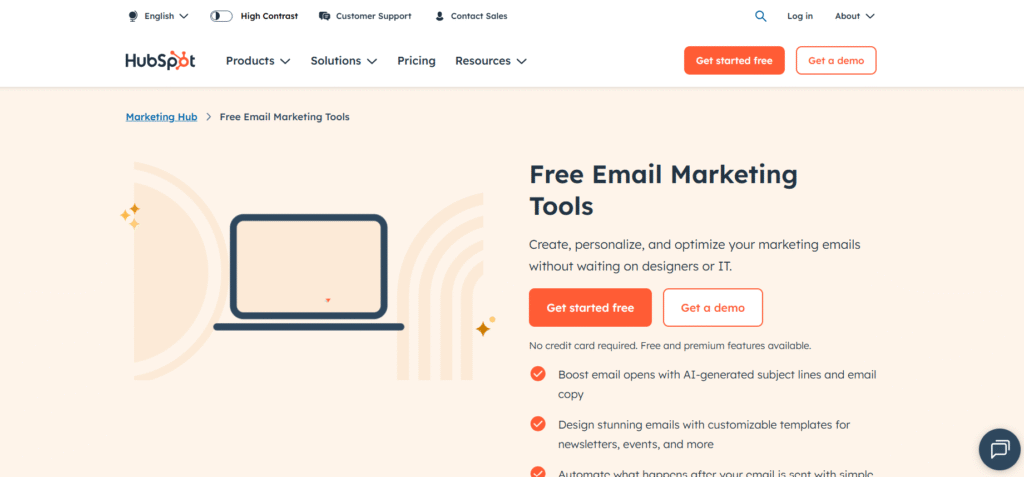
With HubSpot, you can collect contacts using their forms, manage them in a powerful CRM, and send up to 2,000 emails per month for free. The free plan also allows unlimited users and lets you assign contacts to each team member.
The drag-and-drop editor is smooth and highlights any issues you might have missed. However, the free plan offers only a single basic newsletter or promotion template, with no option to upload your own or code in HTML. You also get limited access to automation, landing pages, and webpages—upgrading to their Sales or Marketing Hub unlocks more.
What we liked
HubSpot provides a strong CRM, form builder, ad management tools, and other useful features. Despite being feature-rich, it’s easy to use. The free plan allows storage of up to 1 million contacts, which is very generous.
Where they could improve
Although contact storage is high, the 2,000-email monthly limit can feel restrictive. HubSpot branding appears on every email sent, and the free plan lacks multiple templates or the ability to upload custom designs. Free users also cannot fully authenticate their sending domain via SPF and DKIM, though deliverability scores remain decent.
Who the free plan is best for
Small to medium-sized businesses looking for a solid free CRM. Keep in mind the low monthly email limit, absence of A/B testing, and limited automation features, which may require a paid upgrade as your needs grow.
7. Mailchimp – Bringing Fun to Email Marketing

Email marketing can sometimes feel a bit dull, but Mailchimp adds a touch of fun with its quirky branding and user-friendly features, making it one of the world’s most popular email marketing platforms.
Previously, the free plan allowed 10,000 emails per month to up to 2,000 contacts. Since being acquired by Intuit, this has changed: the free plan now permits 1,000 emails per month to 500 contacts, with a daily sending limit of 500 emails. You still get access to landing pages, forms, and reporting. For features like ad-free emails, automations, A/B testing, chat/email support, inbox previews, campaign scheduling, and time zone delivery, you’ll need to upgrade to a paid plan.
What we liked
Mailchimp offers detailed reporting, including conversion stats, social engagement, e-commerce tracking, and email domain performance. Its forms integrate easily with websites, and landing pages are included. With over 800 third-party integrations—including niche tools like OpenTable for restaurants—Mailchimp is flexible and relatively easy to use.
Where they could improve
The free plan lacks automations and scheduling, which are key reasons to use email marketing software. Templates on the free plan feel outdated, and emails often land in Gmail’s Promotions tab—fine for promotional content but not ideal for informational or transactional messages. The reduced allowances and daily sending cap are also limitations.
Who the free plan is best for
Given the new restrictions, Mailchimp is harder to recommend over competitors. It may suit users who value detailed reporting, but the inability to schedule emails is a major drawback. Paid plans can also become expensive once you upgrade.
8. Zoho Campaigns – The Swiss Army Knife of Email Marketing
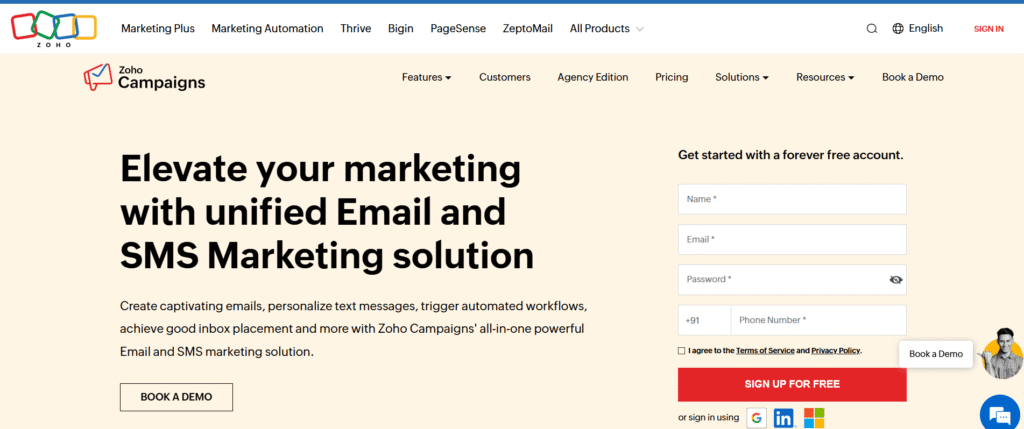
Zoho is a major player in the sales and marketing space, offering a wide range of services for business owners and marketers all in one place.
Zoho Campaigns handles the email marketing side, featuring a strong selection of well-designed templates and an intuitive editor, making it a solid choice for those on a budget.
What we liked
The interface is clean and easy to navigate. The editor is fast and includes essential elements like columns, videos, and polls. A standout feature is the ability to upload images directly from Unsplash. Segmentation options are available, and their variety of email and form templates is impressive.
Where they could improve
The free plan doesn’t include any automations, though this feature is available starting at $5/month. The form builder could be more user-friendly with drag-and-drop functionality. Recent changes also removed A/B testing and scheduling from the free plan, and the email allowance has been halved, making it more limited compared to other tools.
Who the free plan is best for
Zoho Campaigns’ free plan is ideal for users seeking a straightforward email marketing tool with high-quality design templates. If you need basic automation without paying, MailerLite might be a better option.
9. Sender – Simple and Straightforward

With its clean interface and smooth user experience, Sender is one of the easiest email marketing tools to use. The free plan supports up to 2,500 subscribers and 15,000 emails per month, making it a strong choice for a free email service. It also includes useful features like unlimited automations and a variety of email and form templates.
What we liked
The free plan’s automations are surprisingly advanced—you can run abandoned cart campaigns and automatically move subscribers between lists. Recent updates also allow A/B testing for subject lines, CTAs, and design elements within automations. Overall, the simplicity of Sender provides a refreshing alternative to more complex platforms with similar features.
Where they could improve
While the email editor is very easy to use, it’s somewhat basic compared to other providers.
Who the free plan is best for
Sender is ideal for anyone seeking a straightforward, no-fuss email marketing tool with some useful extras, combining simplicity with practical functionality.
10. Brevo (formerly Sendinblue) – Free Automation Made Easy
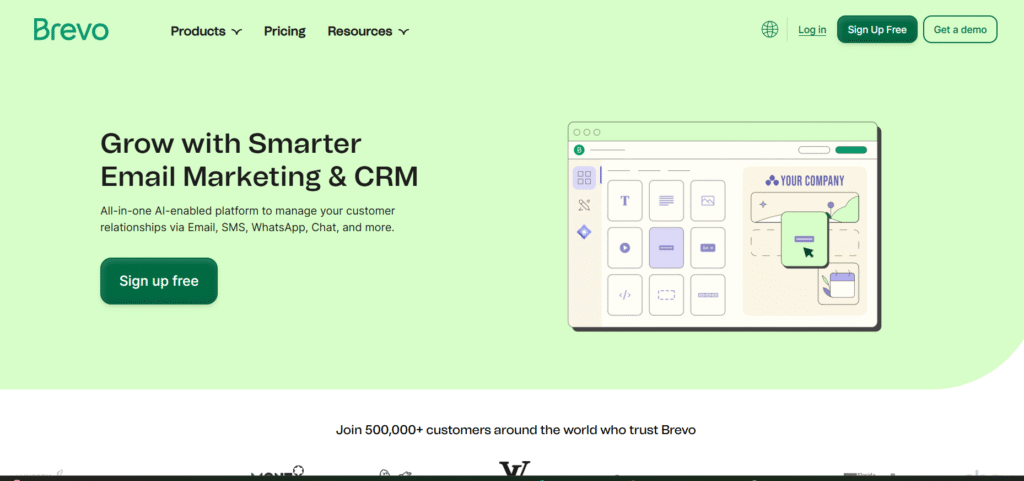
Previously known as Sendinblue until May 2023, Brevo has evolved from a transactional email provider into a full-featured email marketing platform. It offers advanced tools like SMS marketing, email automation, and contact relationship management.
The free plan supports up to 100,000 subscribers and 9,000 emails per month, with a daily limit of 300 emails. Some features are restricted, such as email heat maps, detailed tracking of openers and clickers, and ad-free emails.
What we liked
Brevo’s marketing automation is more sophisticated than most free ESPs, allowing you to build and test campaign workflows based on actions like page visits, email engagement, or product purchases. Reporting is solid, though the free plan doesn’t show exactly who opened or clicked emails. Paid plans start at just $9 for 5,000 emails, making upgrades affordable.
Where they could improve
While templates are mobile-responsive, the selection is limited, though you can upload your own. Some standard features, like A/B testing, are missing on the free plan.
Who the free plan is best for
Brevo is ideal if your email marketing focuses on trigger-based campaigns—like welcome emails, abandoned cart messages, or behavior-driven emails. It’s also a good option for sending mass emails without cost.

